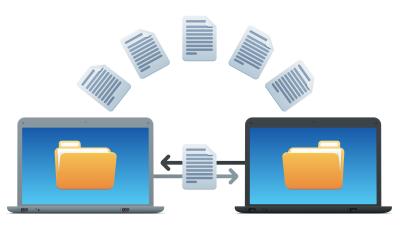 As the evolution of digital innovation continues to occur, the increase in cybercrime among other dangerous activities continue to happen in the same measure. That is why the phrase ‘secure transfer of file’ is common with organizations seeking to share their information, data, or sensitive files. Unfortunately, numerous aspects hinder the process of ensuring secure transfer of files inside and outside organizations. If you’re seeking to protect your organization against the threat of cybercrime, you need to have systems in place to ensure secure and efficient transfer of files. Secure systems of file transfer are essential in the following ways:
As the evolution of digital innovation continues to occur, the increase in cybercrime among other dangerous activities continue to happen in the same measure. That is why the phrase ‘secure transfer of file’ is common with organizations seeking to share their information, data, or sensitive files. Unfortunately, numerous aspects hinder the process of ensuring secure transfer of files inside and outside organizations. If you’re seeking to protect your organization against the threat of cybercrime, you need to have systems in place to ensure secure and efficient transfer of files. Secure systems of file transfer are essential in the following ways:
Compliance
Simplifying file transfer through the use of the right transfer software will keep you in compliance with the authorities or the government regulations. The government usually takes the security of data and information privacy seriously, implying that your organization cannot afford to make mistakes by violating the laws of compliance. The repercussions and penalty for not complying with these laws will put your company at risk.
That is why a compliance-focused FTP provider ensures that your systems are designed such that files are stored, shared, accessed, and distributed in a manner that is compliant with the relevant regulatory agencies. The common regulations, in this case, include ITAR, DSS, HIPAA, SOX, and GLBA.
When it comes to file transfer, it is advisable not to gamble with aspects of regulatory compliance. Make sure you implement a safe and secure file transfer solution which will make data security a top priority.
Guaranteed Delivery and Data Security
The exchange of data between partners and locations is often integral to crucial business processes. Control features which can be used to track the transmission and offer proof of delivery can be lacking in most FTP systems. However, the integration of MFT or B2B will ensure guaranteed delivery of all files transmitted.
If the data that your organization is transferring is classified, proprietary, or subject to protection regulations, then security is crucial. In instances where security and regulatory audits are required, FTP can be risky. Many auditors will consider the FTP sprawl to be a sign of compromise in their systems. However, MFT provides security, customizable controls, and the ability to automate functions.
Accessibility
A crucial aspect of the secure file transfer is the capability of managing access on the different granular levels. An excellent system should deny access to certain files based on the information given as to who has the right of access. Additionally, a secure file transfer should be able to prevent any sensitive information from getting into the wrong hands. Today, providers such as FTP provide this control, thus empowering you to manage how other people use your file. By safely securing your files on the FTP server, you’ll be in a position to prevent access to individual files and certain directories based on those who require such information to carry out their work.
Ensuring compliance, simple, and safe transfer of data will require having the right transfer systems in place. The integration of FTP and MFT into these systems enhances the security file transmission and ensures guaranteed delivery.
Learn more
If the word “exfiltration” doesn't fill you with horror, it should. If you're not crossing yourself and knocking on wood every time you hear it, y ...
With the different laws on breach of information at the federal and state level, businesses feel the need to make sure their employees and custome ...
A recent study has shown that the global cost of cybercrime will reach a staggering $2-trillion by 2019. That is a massive 4x increase from the $5 ...
Are you aware that your data is the most valuable asset on your network or computer? Nowadays, data moves relatively freely among the cloud, mobil ...
The Remote Desktop Protocol (RDP) is a secure network communication protocol tailored to remote management, remote access to virtua ...







